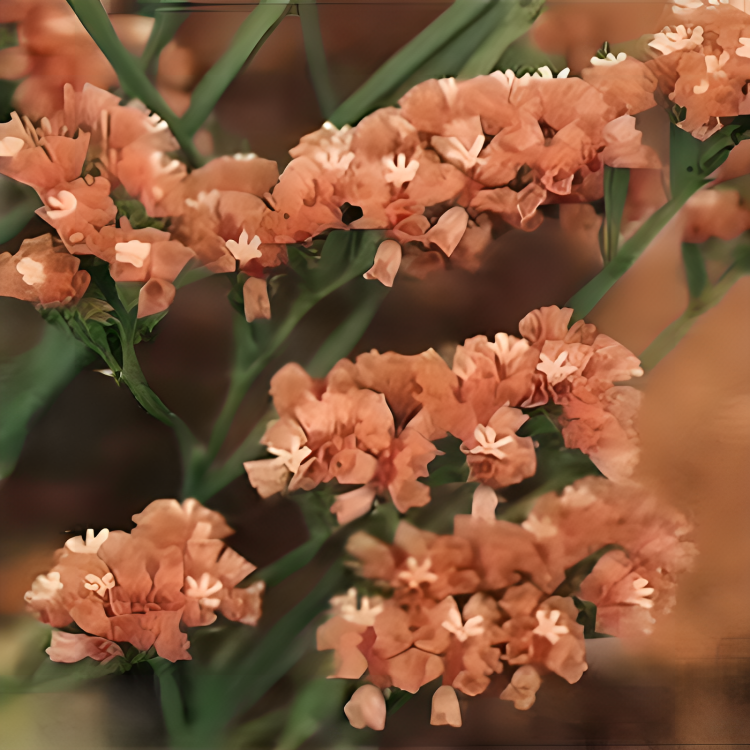- Historical context: Statice, also known as Sea Lavender, is a genus of flowering plants in the family Plumbaginaceae. The 'Apricot Beauty' is a variety of Statice that is known for its unique apricot-colored blooms.
- Geographical origination: Statice is native to the Mediterranean region and parts of Asia, but the 'Apricot Beauty' variety has been cultivated worldwide due to its popularity in gardens and floral arrangements.
- Relevant cultural significance: Statice flowers are often used in dried flower arrangements due to their ability to retain color and shape when dried. They are also a symbol of remembrance.
- Time period of discovery: The exact time period of discovery is not clear, but Statice has been cultivated for centuries for its ornamental and medicinal properties.
- Original habitat: The original habitat of Statice is coastal areas with well-drained, sandy soil.
- Notable historical uses: Historically, Statice was used in traditional medicine for its anti-inflammatory and diuretic properties.
- Ideal temperature range: Statice prefers a temperature range of 60-75°F (15-24°C).
- Soil type: Statice thrives in well-drained, sandy soil with a neutral to slightly alkaline pH.
- Sunlight requirements: Statice requires full sun for optimal growth and flower production.
- Watering needs: Statice has moderate watering needs. It is drought-tolerant once established, but should be watered regularly until then.
- Planting season: Statice seeds should be sown in spring after the last frost.
- Germination time: Statice seeds typically germinate in 14-21 days.
- Growth cycle duration: Statice has a growth cycle of 90-120 days from seed to flower.
- Common pests and diseases: Statice is relatively pest-free, but can be affected by root rot if overwatered.
- Companion planting advice: Statice pairs well with other drought-tolerant plants such as lavender and rosemary.
- Common challenges and solutions: One common challenge is overwatering, which can lead to root rot. This can be avoided by ensuring the soil is well-drained and not watering too frequently.
- Nutritional values: Statice is not typically consumed, so it does not have notable nutritional values.
- Health benefits: Historically, Statice was used in traditional medicine for its anti-inflammatory and diuretic properties.
- Culinary uses: Statice is not typically used in cooking.
- Medicinal uses: In traditional medicine, Statice was used to treat conditions such as edema and inflammation.
- Other unique advantages: Statice is a popular choice for dried flower arrangements due to its ability to retain color and shape when dried. It is also a low-maintenance plant that is drought-tolerant and relatively pest-free.




